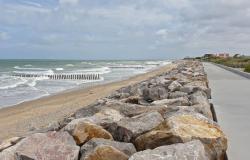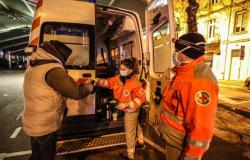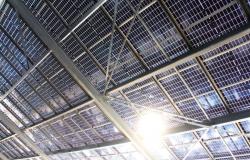Those who work at Chernobyl are aware that they contribute to the security of Ukraine but also of the whole world. Those who have returned feel at home again. Since the start of the war, the area around the power station, once full of tourists, has once again been closed to visitors. Only authorized soldiers, employees and journalists may enter.
A three-hour drive separates kyiv from Chernobyl. We make a detour through Boutcha, rebuilt since the horrible massacre two years ago. In Andriïvka and Borodianka, bombed houses stand like war memorials. A Banksy mural of a gymnast sits near a devastated house. In the central square, a gaping hole left by the Russians crosses the front of the statue of the poet Taras Shevchenko.
A Soviet-style wall and military checkpoint mark the entrance to the Chernobyl zone. The road we are taking is the only intact one of the seventeen in the area. We see the destroyed bridges being put back together. Our guide warns: “Prohibition on photography. Security reasons.”
Our phones and cameras will be looked at as we exit, as sharing certain images could threaten the safety of Ukrainians.
Protective clothing and Geiger counters
We pass through dense forests. Decrepit workers' homes appear between the trees. People are at the windows. In the street, soldiers on leave walk or jog as if peace reigns. Chernobyl is the last town still inhabited in the prohibited zone which encompasses thirty kilometers around the power plant. One hundred and fifty thousand people were evacuated from the area after the 1986 accident. The place requires constant maintenance. The danger of a new tragedy has not disappeared, despite the significant reduction in radiation.
Employees take turns every two weeks. Most come from Slavoutych, which they return to at the end of their rotation. Before the Russian occupation, the journey took forty-five minutes via Belarus. Since the war, it's a six-hour drive. Four thousand eight hundred people work in ten units. The closed area can accommodate one thousand five hundred. The radiation examination laboratory does not receive tourists, but we are gladly shown around. During the visit, several rooms go dark. Power cuts are common with war. Generators take over. The Russians are also making the parts of the country spared from direct confrontations more and more unlivable, our guides say.
Protective clothing and Geiger counters are mandatory for those present in the facilities. Lit by flashlights, we start our tour in the basement, between walls painted a garish green and stickers warning of radiation. One floor higher, the modern and sterile alpha and gamma ray examination rooms are equipped with machines and computers with the EU logo.
We meet a thirty-year-old engineer, presented by the director as the young talent of the laboratory. He works ten hours a day, loves his job very much, even if it is p






